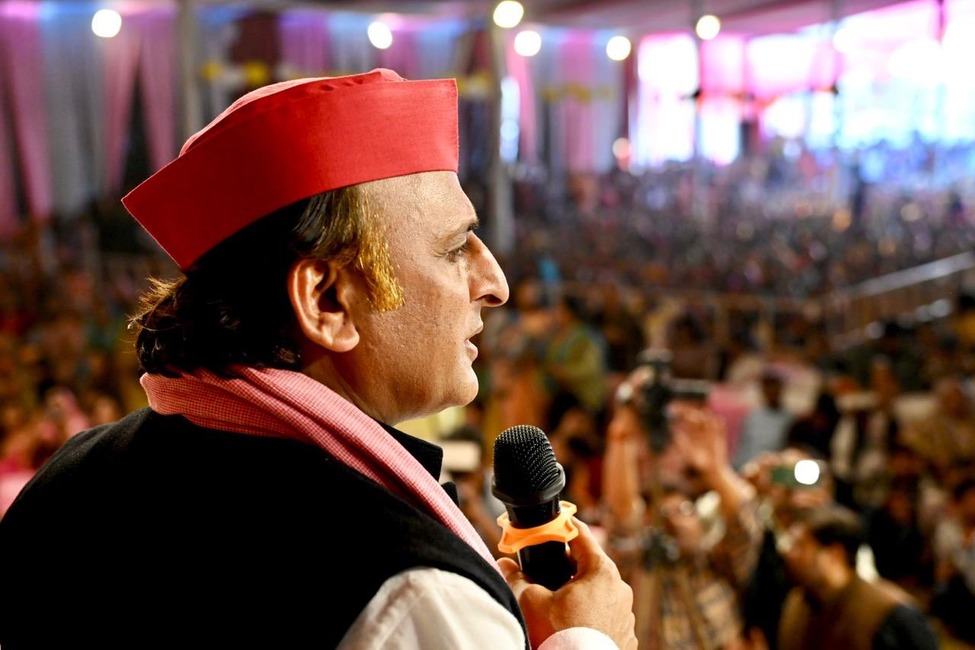
With the INDIA bloc in disarray after the defeat of the Congress in Haryana and Maharashtra and of AAP in Delhi, it needs a new leader. In such a scenario, Akhilesh Yadav offers the best option
The arguments in favour of Yadav bear some merit. He has been the chief minister of the largest state in India, is the national president of a major regional party in the Hindi belt, and head of the Samajwadi Party (SP), which is the third largest party in the 17th Lok Sabha
Amid the hustle and bustle of metropolises, the culture of addas (hangouts), which are usually the hotspots of political discussions and are an integral part of the social culture of the small towns in India, is usually non-existent. But come elections, this small-town phenomenon can be seen even in mega cities like Delhi, where small groups of people huddle together, usually over cups of tea, to discuss various political alignments or how the pre poll promises benefit or do not benefit them.
During the campaign for the recently concluded Delhi elections, an animated discussion was taking place at a tea shop near Mandi House — in an area often considered the cultural hub of the city. The discussion went beyond the possibility of the Aam Aadmi Party (AAP) or the Bharatiya Janata Party (BJP) forming the government in Delhi and turned towards the future of the Indian National Developmental Inclusive Alliance (INDIA) — a coalition of 28 parties that adopted the name in July 2023 at a meeting in Bengaluru.
There was a reason for this. While, in the 2024 Lok Sabha elections, the INDIA parties, which included the Congress and AAP, fought collectively against the BJP, in the Delhi election the two parties squared off against each other. “To defeat Modi, the Opposition needs to remain united and fight the elections together, but Rahul [Gandhi] failed to do so,” said one person in the group. “Then who will unite the Opposition?” asked another. Someone brought up the name of Trinamool Congress (TMC) supremo Mamata Banerjee. But when someone else suggested the name of Akhilesh Yadav as the leader of the Opposition alliance, a consensus seemed to emerge.
In some ways, the roadside discussion in the heart of Delhi was reflective of the current state of Opposition unity in the country. The arguments in favour of Yadav bear some merit. He has been the chief minister of the largest state in India, is the national president of a major regional party in the Hindi belt, and head of the Samajwadi Party (SP), which is the third largest party in the 17th Lok Sabha. His stance against Modi and Yogi Adityanath and his fight on every front — from the streets to Parliament — also makes him popular among the anti-BJP voters. He is also younger than other leaders of the INDIA bloc. All these factors tip the scales in his favour to make him the natural contender for leading the alliance.
Yadav emerged as the biggest strategist in the last Lok Sabha elections and defeated the BJP in Uttar Pradesh, which was confident of victory after the inauguration of the Ram temple in Ayodhya, by countering Hindutva politics with caste-based social engineering. He also broke the myth that Dalits and Yadavs cannot unite in Uttar Pradesh politics. Yadav succeeded in uniting Dalits with backward Muslims, while Tejashwi Yadav of the Rashtriya Janata Dal (RJD) failed to do the same in Bihar. At present, it is clear that the BJP is the natural contender for power and if it is to be stopped from coming to power again, then a strong Opposition alliance is necessary.
After the Delhi election results, it’s clear that INDIA exists only on paper, and it needs a new leadership. That leader can be Yadav, given that it’s widely accepted that the path to Delhi leads through Uttar Pradesh. At the moment, it appears, out of all the Opposition leaders, only Yadav is capable of stopping the Modi-Yogi juggernaut.
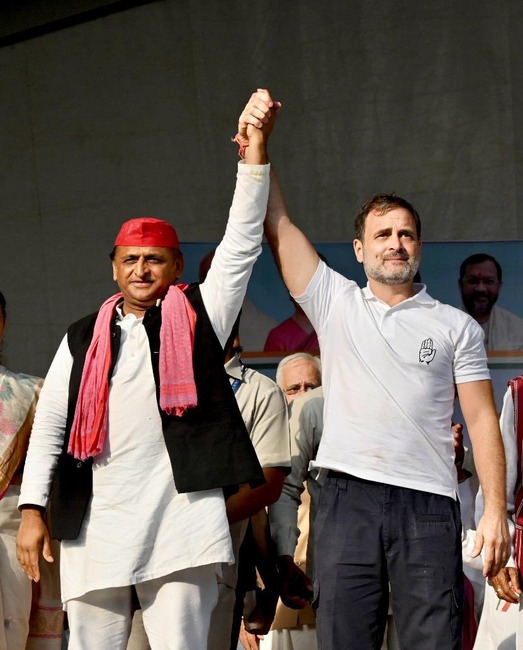
The Congress needs to remember that its best performace in UP in the Lok Sabha elections since 2009 was mainly due to the mobilisation of voters by the SP cadre
After the Delhi election results, it’s clear that INDIA exists only on paper, and it needs a new leadership. That leader can be Yadav, given that it’s widely accepted that the path to Delhi leads through Uttar Pradesh. At the moment, it appears, out of all the Opposition leaders, only Yadav is capable of stopping the Modi-Yogi juggernaut
In February 2012, in the run-up to the UP Assembly elections, Gandhi tore up a list of unfulfilled poll promises by the Samajwadi Party and the Bahujan Samaj Party (BSP) at a rally. He said that the SP manifesto was of no use after the party failed to fulfil its earlier promises and only the Congress could deliver on the poll promises.
This incident took place at a time when the then SP supremo, Mulayam Singh Yadav, was trying to extend the hand of friendship towards the Congress. Perhaps Gandhi’s reaction was guided by the Congress winning 21 seats in UP in the 2009 Lok Sabha elections and Raj Babbar’s win over Dimple Yadav in the Firozabad by election, giving him a false sense of the Congress’ resurgence in UP. Reacting to the incident, Akhilesh Yadav had said that he usually didn’t challenge anyone but, if challenged, accepted it and responded to it.
In the months leading up to the SP’s finest innings in UP politics, Yadav travelled the length and breadth of the state, leading multiple cycle yatras (tours).
It was a clever use of the party’s symbol as an election prop to connect with the masses and youngsters in the state. The result of his efforts was clear: the SP won 224 seats out of 403 and he became the youngest chief minister in the country at the age of 38.
In the 2024 Lok Sabha elections, the SP won 37 seats after being reduced to being a marginal player — winning just five seats in the previous two elections in 2014 and 2019.
The SP emerging as the third largest party marked an important change in national politics and only a grassroots leader could have wrought it. The results of the Lok Sabha elections underlined his growing stature in national politics and also helped him become the unchallenged leader of the SP.
“Patience and restraint are Akhilesh Yadav’s biggest political assets. He knows how to find a way out of challenges. He is popular among the poor, deprived, backward, and minorities across the country, including Uttar Pradesh,” says the former Leader of the Opposition in the Legislative Council, Dr Sanjay Lathar. “Opposition leaders take his words seriously in Parliament. His political understanding and wisdom are better than of many experienced leaders of the country . His political upbringing has been done by socialist leaders like Janeshwar Mishra, who is known as ‘chhota Lohia’. Therefore, he not only understands the mood of the country and society but also has a different vision of looking at politics.”
Yadav bore a succession of electoral defeats from 2014 to 2022. But he remained in Lucknow, instead of going abroad for introspection. He systematically ended the stigma of the party’s association with criminals and started balancing caste equations.
The 2024 election results in Uttar Pradesh were remarkable after the SP under Yadav’s watch relegated the BJP to second spot in the state.
He emerged as the biggest factor in limiting the BJP to 240 seats — well short of the majority mark — though the party was confident of a massive victory following the Ram temple inauguration. He achieved the stunning result through deft ticket distribution that balanced the complicated and delicate caste equations that are so crucial for success in any electoral battle in UP. Not only did the BJP’s seats in UP reduce by almost 50%, even Prime Minister Narendra Modi’s victory margin in Varanasi shrank considerably. The key to Yadav’s successful 2024 Lok Sabha campaign was his PDA or pichda–Dalit alpsankhayak (backward, Dalit and minority) formula.

In the Delhi Assembly elections, Akhilesh Yadav actively campaigned for Arvind Kejriwal and the Aam Aadmi Party
Yadav bore a succession of electoral defeats from 2014 to 2022. But he remained in Lucknow, instead of going abroad for introspection. He systematically ended the stigma of the party’s association with criminals and started balancing caste equations. The 2024 election results in UP were remarkable after the SP relegated the BJP to second spot in the state
“Earlier, it was believed that Dalits and Yadavs cannot unite in the politics of Uttar Pradesh. Especially after the Lucknow guest house incident, Dalit voters had kept a distance from the SP,” says senior journalist and political analyst Sachin Budhaulia.
“But Akhilesh was successful in getting Dalit voters, especially Jatav voters, who are considered BSP supporters, on his side with the help of the PDA formula. The UP result in the 2024 Lok Sabha is enough to prove that Akhilesh has the ability to convert defeat into victory and expand the social base of the party. Akhilesh succeeded by combining Dalits with backwards and Muslims, while Tejashwi Yadav failed to do the same thing in Bihar.” The Lucknow guest house incident refers to the attack on BSP supremo Mayawati in 1995 by SP workers after she withdrew her support to the party. The memory of this incident is still fresh in the minds of Dalit voters and since then they had kept a distance from the SP in every election.
The politics of Yadav and Gandhi are as different as chalk and cheese. After entering the political arena in 2004, Gandhi behaved like a super prime minister, enjoying all the perks of power without shouldering any responsibility. During this period, he tried to cultivate the image of a rebel leader with the public at large and within the Congress as well. Nothing illustrates this point better than the way he stormed into Ajay Maken’s press conference in September 2013 at the Press Club of India, where he was severely critical of his own government for introducing an ordinance that intended to mitigate the guidelines laid down by the Supreme Court in the Lily Thomas case. In that case, the SC had passed an order that disqualified an elected representative with immediate effect if convicted in a criminal case that carried a minimum sentence of two years.
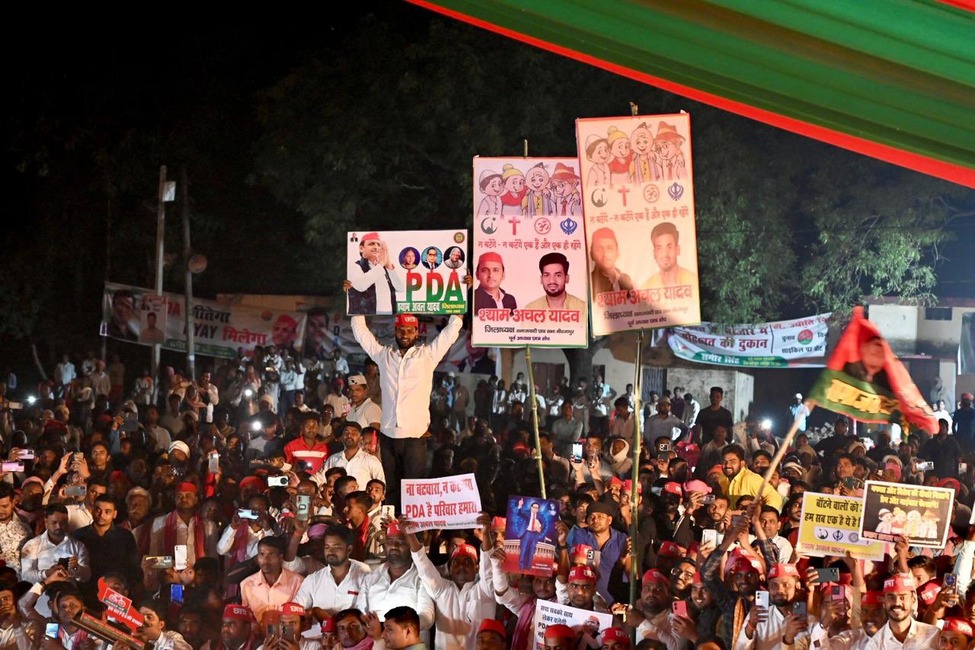
In political terms, Yadav’s PDA turned out to be one of the most sucessful experiments in social engineering in recent times
The politics of Yadav and Gandhi are as different as chalk and cheese. After entering the political arena in 2004, Gandhi behaved like a super prime minister, enjoying all the perks of power without shouldering any responsibility. During this period, he tried to cultivate the image of a rebel leader
That he pulled off this stunt at the press conference that was being conducted by Maken — the then media head of the Congress and while then Prime Minister Manmohan Singh was abroad on an official visit — speaks volumes of Gandhi’s lack of political finesse. Gandhi said that the ordinance should be torn and thrown away. This lack of political acumen on his part continues to hobble the Congress even today. In 2019, he even lost from the family’s pocket borough, Amethi. The Congress might have won 99 seats in the 2024 Lok Sabha elections, that elevated him to the post of Leader of Opposition (LoP), but Gandhi failed to interpret the results correctly. He is unwilling to accept that the Congress improved its count in the Lok Sabha due to the conversion of votes of its allies in its favour in states like UP and Maharashtra. By itself, the party continues to lose elections even in states where it was well placed to win, as in Haryana in October 2024. His constant attacks on Gautam Adani, both within and outside Parliament, also hasn’t gone down well with the alliance partners. The fragmentation of INDIA was best seen in the Delhi elections, where most of the Opposition parties weighed in favour of AAP and Kejriwal. It was a rejection of Gandhi’s leadership of the coalition.
Obviously, in such a situation, the Opposition needs a new leadership. Age goes against Sharad Pawar, while Mamata Banerjee, who has also crossed 70, has limited appeal outside West Bengal. It’s worth recalling how Banerjee’s 2014 rally at the Ramlila Ground in Delhi flopped badly and Anna Hazare refused to attend it due to the sparse crowd. In such a situation, being from the Hindi belt, Yadav emerges as the best face to lead the Opposition. In contrast to Gandhi’s aggression, Yadav is known for making restrained statements and displaying political etiquette in his public interactions. Yadav has also been meeting Opposition leaders individually and collectively. Besides, the SP is the only regional party whose support base is not limited to Uttar Pradesh. The party has been getting electoral success in Mumbai, Maharashtra, and Madhya Pradesh, where 13 SP candidates have won in the past 30 years. The SP also carries some appeal in the Ahirwal belt of Haryana, in parts of Uttarakhand, and enjoys support among Purvanchali voters in Delhi. At present, it is clear that the BJP has emerged as the natural party of governance in the absence of a viable alternative.
To stop it, a united Opposition is the need of the hour with a new leader heading it.
However, it must be considered that the idea of Yadav leading the Opposition coalition is still at a nascent stage. Much will depend on to what extent Opposition parties in the INDIA bloc accept the SP supremo as the leader. It’s also worth noting that the original proponent of a united Opposition front, Nitish Kumar, went back to the BJP in January 2024 after turning down the offer to be the convener of the Opposition alliance. In such a scenario, only Yadav emerges as a viable choice since he has an earthy touch and has the ability to expand the social base.

Accepting Yadav as the face of a united Opposition would require the senior leaders to shed their egos
In contrast to Gandhi’s aggression, Yadav is known for making restrained statements and displaying political etiquette in his public interactions. Yadav has also been meeting Opposition leaders individually and collectively. Besides, the SP is the only regional party whose support base is not limited to Uttar Pradesh


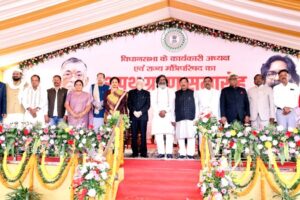
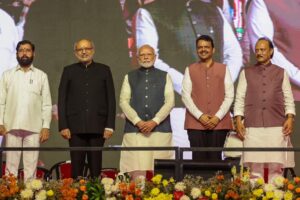
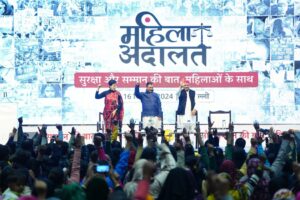
Add Comment